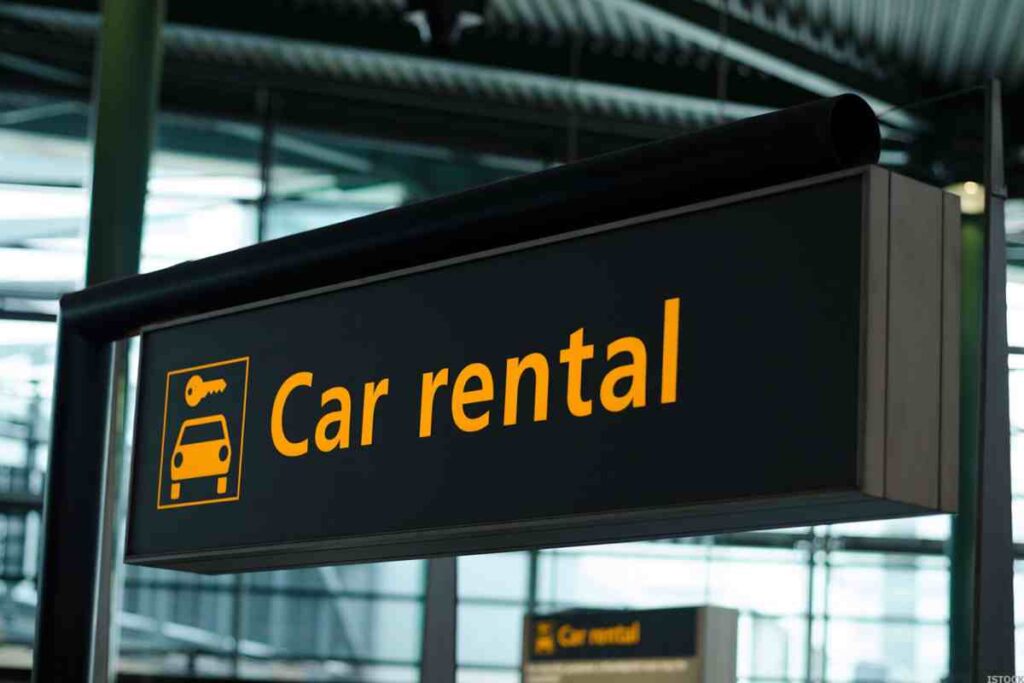Ever wondered why your car insurance company asks about your annual mileage when setting up your policy? Or why your friend, who drives less than you, pays less for their insurance? The answer is all about how much you drive. In this article, we’ll dive into why mileage matters for your car insurance premiums. We’ll explain what mileage means, how it affects your insurance costs, and why insurers care so much about it. Plus, we’ll share some tips on how to reduce your mileage and potentially save on your car insurance.
What is Mileage?

Mileage, also known as fuel economy, is a measure of how far a vehicle can travel per unit of fuel consumed. It’s usually expressed in terms of miles per gallon (mpg) in countries like the United States, or kilometers per liter (kmpl) in countries like India.
The calculation of mileage is quite straightforward. It’s done by dividing the total distance travelled by the amount of fuel consumed. Here’s the formula:
Mileage = Total Distance Travelled / Fuel Consumed
Now, let’s discuss the difference between city mileage and highway mileage:
City Mileage refers to the fuel efficiency of a vehicle when driving in a city or urban environment. City driving often involves frequent stops and starts due to traffic lights, congestion, and lower speed limits. This stop-and-go driving can consume more fuel, resulting in lower mileage.
While highway mileage refers to the fuel efficiency of a vehicle when driving on a highway or freeway. Highway driving typically involves higher speeds and less frequent stops, which can result in better fuel efficiency and higher mileage.
Impact of Speeding Tickets on Car Insurance
It’s important to note that the actual mileage can vary based on several factors including driving habits, vehicle condition, and even weather conditions. Therefore, the mileage figures provided by manufacturers are often based on standardized tests and may not reflect real-world driving conditions.
Average Miles Driven Per Year in U.S.
According to the Federal Highway Administration (FHWA), the average miles driven per year in the U.S. by age group are as follows:
- 16-19 years old: Males drive an average of 8,206 miles per year, while females drive an average of 6,873 miles per year. The total average for this age group is 7,624 miles per year.
- 20-34 years old: Males drive an average of 17,976 miles per year, while females drive an average of 12,004 miles per year. The total average for this age group is 15,098 miles per year.
- 35-54 years old: Males drive an average of 18,858 miles per year, while females drive an average of 11,464 miles per year. The total average for this age group is 15,291 miles per year.
- 55-64 years old: Males drive an average of 15,859 miles per year, while females drive an average of 7,780 miles per year. The total average for this age group is 11,972 miles per year.
- 65+ years old: Males drive an average of 10,304 miles per year, while females drive an average of 4,785 miles per year. The total average for this age group is 7,646 miles per year.
These averages can vary based on factors such as lifestyle, location, and occupation. For instance, people who commute long distances for work or live in rural areas may drive more than those who work from home or live in cities.
The Impact of Mileage on Car Insurance

Mileage plays a pivotal role in determining car insurance premiums, and understanding this connection can help policyholders make informed decisions about their coverage. Here’s a detailed look at why mileage is such a crucial factor:
Risk Assessment: Insurance is fundamentally about risk, and mileage is a key indicator of that risk. The logic is straightforward: the more you drive, the higher the probability of being involved in an accident. Insurers often use statistical models to correlate the number of miles driven with the likelihood of filing a claim. This is why when you apply for insurance, one of the first questions asked is about your annual mileage.
Premium Calculation: Insurance companies consider annual mileage when calculating premiums. Each company has its own unique way of doing this, a simplified version of the calculation could be represented as:
Premium = Base Rate×(1+Mileage Factor)
The Mileage Factor is derived from the insurer’s historical data on claims and mileage. For example, if the insurer’s data suggests that drivers who travel 15,000 miles a year are 10% more likely to file a claim than those who drive 10,000 miles, the Mileage Factor for 15,000 miles might be 0.10.
Mileage Tiers: Insurers often categorize drivers into mileage tiers. Each tier has a corresponding rate factor that adjusts the base premium. For instance, a driver in the 0-5,000 miles tier might pay a base rate, while a driver in the 15,000-20,000 miles tier might pay the base rate plus a certain percentage.
Discounts for Low Mileage: Many insurers offer discounts to drivers who log fewer miles, as they represent a lower risk. These discounts can be significant, making it important for drivers who don’t use their cars frequently to report their mileage accurately.
Usage-Based Insurance (UBI): With technological advancements, some insurers now offer UBI policies where premiums are directly tied to the actual miles driven. These policies use telematics devices to track mileage and driving behavior, offering a more personalized premium.
Is Additional Rental Car Insurance Necessary?
In summary, mileage is a significant factor in car insurance premiums because it’s a direct measure of how much a vehicle is on the road and, by extension, the risk exposure.
Mileage Brackets and Insurance Rates
Mileage brackets are a way for insurance companies to categorize drivers based on the number of miles they drive annually. These brackets help insurers to determine the risk level associated with a driver and adjust insurance rates accordingly. Here’s how mileage brackets typically affect insurance rates:
| Miles | Increase in rates |
|---|---|
| 5,000 | Receives best rates |
| 7,500 | Up average of 10% from 5,000 |
| 10,000 | Up average of 7% from 7,500 |
| 12,000 | Up average of 4% from 10,000 |
| 20,000 | Up average of 25% from 12,000 |
Rate Adjustments: As drivers move up in mileage brackets, their insurance rates tend to increase. This is because the more miles driven, the greater the exposure to potential accidents and claims. For example, a driver who moves from the 0-7,500 miles bracket to the 10,001-15,000 miles bracket may see their rates go up by a certain percentage.
Average Annual Premium Rates: According to The Zebra, average annual premium rates based on driver mileage per year are as follows:
- $1,409 for fewer than 7,500 miles.
- $1,470 for 7,500 to 10,000 miles.
- $1,485 for 10,000 to 15,000 miles.
- $1,495 for more than 15,000 miles.
Discounts and Savings: Drivers in lower mileage brackets can often take advantage of discounts. For instance, driving under 7,000 or 5,000 miles annually could make you eligible for low-mileage discounts, which on average nationally, are 5% or under.
For those who drive less, usage-based insurance plans can be a cost-effective alternative. These plans track driving performance and mileage, potentially offering lower rates for lower mileage.
In essence, understanding mileage brackets and how they relate to insurance rates can empower drivers to make better decisions about their car insurance. It’s important to accurately report your mileage to your insurance provider and inquire about any discounts or usage-based insurance options that could benefit you based on your driving habits.
What is Considered Low Mileage for Car Insurance?
Low mileage for car insurance typically refers to the number of miles a vehicle is driven annually that is below the average. Insurers often provide discounts or special rates for low-mileage drivers. The threshold for what is considered low mileage can vary by insurance company, but generally:
- Less than 7,500 miles per year is commonly considered low mileage.
- Some insurers may offer low-mileage discounts for drivers who travel fewer than 6,500 miles per year.
- Other companies might set the bar at under 10,000 or 12,000 miles per year.
It’s important to check with your specific insurance provider as they may have their own definition of low mileage and corresponding discounts.
How to Get Low-Mileage Car Insurance?
If you’re looking to take advantage of low-mileage car insurance discounts, here’s what you need to know.
Begin by accurately calculating your annual mileage. You can do this by tracking your weekly driving distance and multiplying it by 52.
If the total is less than your insurer’s threshold for low mileage, which is often around 7,500 miles per year, you might be eligible for a discount. In case your mileage is above the limit, consider ways to reduce it, such as opting for public transportation or carpooling.
Next, start shopping around for insurance providers that offer low-mileage discounts. Companies like Nationwide, Travelers, and USAA are known to provide competitive rates for drivers with lower annual mileage. Don’t hesitate to ask insurers about the availability of such discounts and the criteria to qualify.
Can You Pause Car Insurance If Not Driving?
For those who drive significantly less, a pay-per-mile insurance plan could be the most economical choice, with premiums based on the actual miles driven. When applying for insurance, ensure that you provide accurate mileage information, as some companies may verify it through odometer readings or telematics devices.
Pay-As-You-Drive Insurance
Pay-As-You-Drive (PAYD) insurance, also known as usage-based insurance, is a type of car insurance policy where premiums are tied to the vehicle’s mileage. Here’s an overview of how PAYD works and its benefits:
How PAYD Works:
- Usage-Based Premiums: With PAYD, the premium is calculated based on the number of kilometers driven. This means that the less you drive, the less you pay for insurance.
- Telematics Device: Insurers typically install a telematics device in your vehicle to monitor the distance covered. This device may also track driving behavior, which can further influence premiums.
Key Benefits of PAYD:
- Lower Premiums for Low-Mileage Drivers: If you don’t drive often, PAYD can offer significant savings on your insurance costs.
- Incentives for Safe Driving: Some PAYD programs offer additional discounts for safe driving habits, as monitored by the telematics device.
- Flexibility: PAYD is ideal for people who use their cars infrequently, such as remote workers or those who primarily use public transportation.
- Environmental Impact: By incentivizing drivers to drive less, PAYD can contribute to reduced emissions and traffic congestion.
- Discounts Based on Kilometers Driven: You can receive discounts on your own damage premium according to the kilometers driven during the policy year, with some insurers offering up to a 25% discount.
Ideal Candidates for PAYD:
- Remote Workers: If you work from home and your car is mostly parked, PAYD can be a cost-effective insurance option.
- Retirees: Those who have reduced their daily commutes can benefit from lower premiums due to less frequent driving.
- Occasional Drivers: People who only use their car for special occasions or weekend outings can save with PAYD.
- Students: College students who drive only occasionally, such as during holidays or for weekend trips, can take advantage of PAYD’s lower premiums.
In conclusion, PAYD insurance is a modern approach to car insurance that aligns the cost with actual vehicle usage. It’s a smart choice for drivers who want to save money and drive less, while also potentially benefiting from safer driving habits.
Impact of Commuting on Insurance Costs
Commuting can have a significant impact on car insurance costs. Here’s a closer look at why and how this happens:
Increased Risk with More Driving: The fundamental principle is that the more you drive, particularly for commuting purposes, the higher your risk of being involved in an accident. This increased risk generally translates to higher insurance rates.
Commuting Defined: Commuting involves driving your vehicle regularly, often during peak traffic hours, which increases the likelihood of accidents. Regular commutes can include driving to work, school, or any other location on an almost daily basis.
Average Cost Impact: The Ascent’s data indicates that motorists who use their vehicles for commuting pay an average of $2,662 per year in insurance premiums, while drivers using their vehicles for personal use pay about $2,629.
Mileage and Premiums: Insurance companies will classify your auto insurance policy based on whether you use your car for commuting. If your commute involves long distances or frequent travel, you may be charged more, depending on your commute mileage and other risk factors.
In summary, commuting can lead to higher car insurance costs due to the increased risk associated with more frequent driving and exposure to busy traffic conditions.
Tips to Reduce Mileage
Reducing your mileage not only saves on fuel costs but can also potentially lower your car insurance premiums. Here are some tips to help you reduce your mileage:
- Plan Your Trips: Try to combine multiple errands into one trip. This can significantly reduce the number of miles you drive.
- Carpool: If you’re going to the same place as someone else, consider carpooling. This can cut your mileage in half.
- Public Transportation: Use public transportation whenever possible. It can significantly reduce the wear and tear on your vehicle and the number of miles you drive.
- Walk or Bike: For short trips, consider walking or biking instead of driving. It’s good for your health and your wallet!
- Work From Home: If your job allows it, consider working from home. This can eliminate your daily commute and significantly reduce your mileage.
- Maintain Your Vehicle: Regular maintenance can improve your vehicle’s fuel efficiency, which means you can drive the same distance with less fuel.
- Drive Efficiently: Avoid rapid acceleration and hard braking. Driving at a steady speed can improve your fuel efficiency and reduce the number of miles you drive.
Remember, reducing your mileage can potentially lower your car insurance premiums. However, it’s important to always report your mileage accurately to your insurance company. Misreporting your mileage can be considered insurance fraud and can lead to penalties.
FAQs
Q 1. What is the average mileage per year for a driver in the U.S.?
Ans. The average mileage per year for a driver in the U.S. is around 14,263 miles.
Q 2. How can I prove my mileage to my insurance company?
Ans. You can prove your mileage to your insurance company through service records, vehicle inspections, or by using a telematics device installed in your car that tracks your mileage.
Q 3. What happens if I underestimate the mileage on my car insurance?
Ans. If you underestimate the mileage on your car insurance, it could be considered insurance fraud. This can lead to penalties such as policy cancellation or increased premiums.
Q 4. Does car insurance go down as the car gets older?
Ans. Generally, car insurance does not automatically go down as a car gets older. While the value of the car decreases over time, the cost to repair it often stays the same or even increases. However, you may choose to reduce your coverage as your car ages, which could lower your premium.
Q 5. How often should I update my mileage with my insurance company?
Ans. You should update your mileage with your insurance company whenever there is a significant change in your driving habits, such as starting a new job with a longer commute, retiring, or working from home.
Q 6. Can I change the mileage on my car insurance?
Ans. Yes, you can change your mileage on your car insurance. If your driving habits change, you should update your mileage with your insurance company to ensure your coverage is accurate.
Q 7. Are there any drawbacks to low-mileage car insurance policies?
Ans. While low-mileage car insurance policies can save money for drivers who don’t drive much, they may not be the best fit for everyone. If you drive more than the low-mileage limit, you could end up paying more. Also, these policies often require the use of a telematics device, which some drivers may not be comfortable with.
Conclusion
In conclusion, the number of miles you drive each year plays a significant role in determining your car insurance premiums. High mileage can indicate a higher risk of accidents, leading to higher premiums, while low mileage can often qualify you for discounts. Understanding how mileage impacts your car insurance can help you make informed decisions and potentially save money. Whether it’s through planning your trips more efficiently, carpooling, or even opting for a Pay-As-You-Drive insurance policy, there are several ways to reduce your mileage and potentially lower your insurance costs.

Milo Thistlethwaite is an auto insurance guru with over 8 years of experience in the industry. Holding a CPCU (Chartered Property Casualty Underwriter) certification, Milo is passionate about helping drivers find the best coverage for their needs. As an author on the ‘FundFinesse’ blog, Milo writes clear, easy-to-understand articles about auto insurance.


